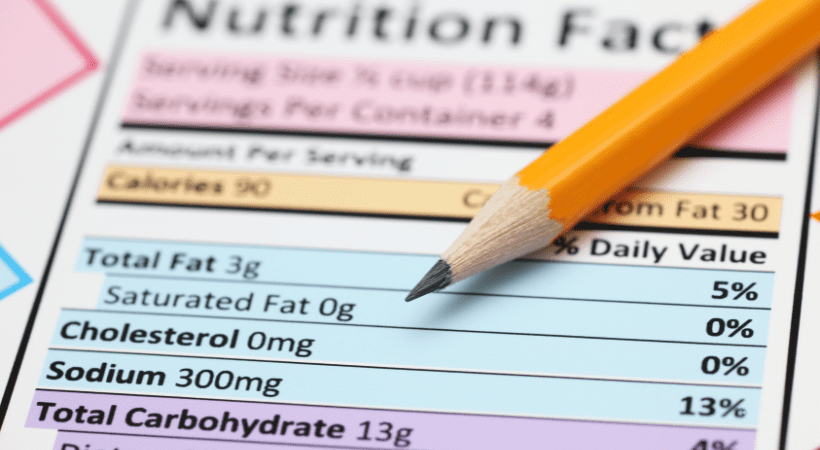Redefining Healthy: What the FDA’s New Rules Mean for Food Labels and Nutrition Claims
Redefining Healthy: What the FDA’s New Rules Mean for Food Labels and Nutrition Claims
On 19th December 2024, the Food and Drug Administration (FDA) issued the final rule for the new definition of “healthy” when used in voluntary claims in food labelling.
This is an update to a 30-year-old definition and aligns it to current scientific agreement around nutrition standards. It also aligns the concept of ‘healthy’ with the ‘Nutrition Facts’ panel on food labels and the Dietary Guidelines for Americans; with the goal to “help reduce the burden of diet-related chronic diseases”.

The legislation reference in 21 Code of Federal Regulations (CFR) 101.65(d) sets new “food group equivalent” requirements linked to nutrient criteria and limits to added sugar, saturated fat and sodium, when making a health claim.
The FDA has not yet given any guidance on a logo or graphic to accompany a “healthy” claim or any imagery to call out that the limits to added sugars, saturated fats and/or sodium have been exceeded.
The date for compliance with these new criteria is 25th February 2028, but companies can begin to use the new claim criteria once the new rule is officially published. A guidance document from FDA is expected to come out as well to support implementation questions.
Products in scope include all foods sold in the United States making a specific reference to “healthy” as a claim and foods making any implied reference to this term. Implied claims are where the labelling suggests that a food may help consumers maintain healthy dietary practices using either implied or explicit information about the nutrient content of the food. Page 5 of Final Rule.
To meet the new claims criteria, the product must contain a minimum amount of food from at least one of the designated “food group equivalents” (FGE’s), which are taken from the food groups and subgroups recommended in the Dietary Guidelines for Americans. An FGE contains the following:
- Vegetable – 1/2 cup equivalent (c-eq)
- Fruit – 1/2 cup equivalent
- Grains – 3/4 ounce (oz) equivalent whole grain
- Dairy – 2/3 cup equivalent
- Protein foods:
- Game meat – 1 1/2oz equivalent
- Seafood – 1oz equivalent
- Egg – 1oz equivalent
- Beans, peas or lentils – 1oz equivalent
- Nuts and seeds or soy products – 1oz equivalent
1oz = 28g
The amounts of each FGE, as well as limits for added sugar, saturated fat and sodium vary by food type. The food must also meet at least one of the following six criteria:
- The food is an individual food or a mixed food product with no ingredients added except water and is comprised of one or more of the following foods: vegetables, fruits, whole grains, fat-free or low-dairy, lean meat, seafood, eggs, beans, peas, lentils, nuts or seeds.
- The food is an individual food that contains at least one FGE and meets the nutrient limits for added sugars, sodium and saturated fat applicable to the relevant food category either per *Reference Amount Customarily Consumed (RACC) (or per 50g for items with a RACC <50g or 3Tbsp). Oils have a special exception.
- The food is a mixed product with at least one FGE, with no less than 1/4 an FGE from at least two food groups and meets the certain nutrient limits per RACC.
- The food is a main dish product that contains at least 2 FGE’s, with no less than 1/2 an FGE from at least two food groups and meets the certain nutrient limits per labelled serving.
- The food is a meal product that contains at least 3 FGE’s with no less than 1/2 an FGE from at least 3 food groups and meets certain nutrient limits per labelled serving.
- The food is a water, tea or coffee product with less than 5 calories per RACC and per labelled serving.
*RACC = the FDA reference for serving size determination
Have questions about the FDA’s new ‘healthy’ labelling rules? Our food label consultants are here to help! Get in touch today to ensure your products meet the latest compliance standards. Check out our food regulatory services today!

Author: Kayleigh Lieberman
I have worked at Ashbury for 6 years, coordinating with the internal Ashbury UK and US teams and also clients. I complete regulatory reviews and keep up to date with market and industry updates. I love being part of a team that is so dedicated to providing high-quality, easy to understand and comprehensive information to our clients. I like to be involved in client communication before a project begins to help me fully understand what the client is looking for and help us to meet their expectations and deliver the most valuable information to them.
Next reads
What’s Next for Food & Drink? Our Experts’ Predictions for 2026
The Peanut Diaries: School and Social Occasions
The Peanut Diaries: Navigating Social Events and Celebrations with Food Allergies
The Peanut Diaries: A Parent’s Journey to Uncovering their Child’s Allergy
Keep up to date with our latest insights
Subscribe to our mailing list to stay in touch with the latest news, insights and updates from Ashbury




